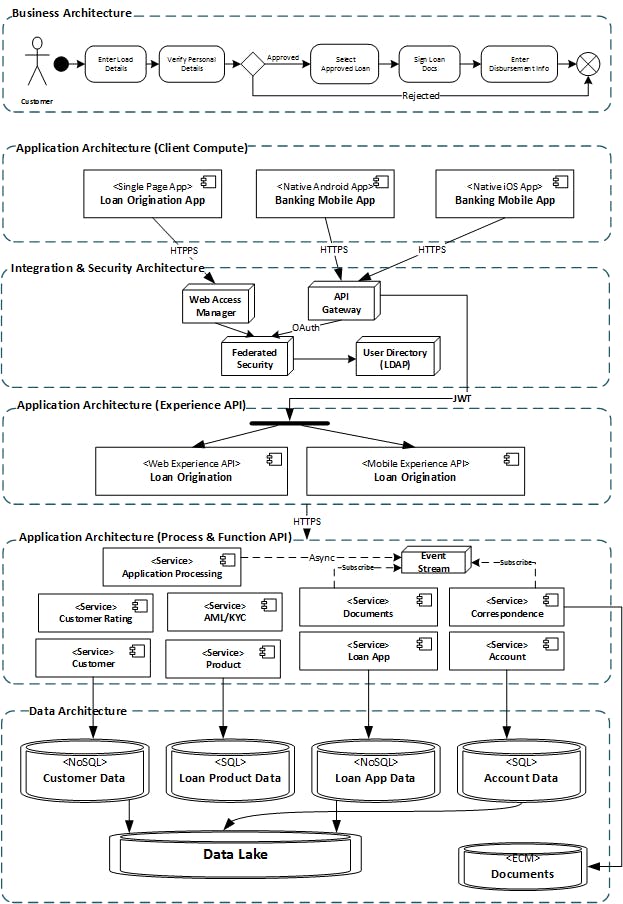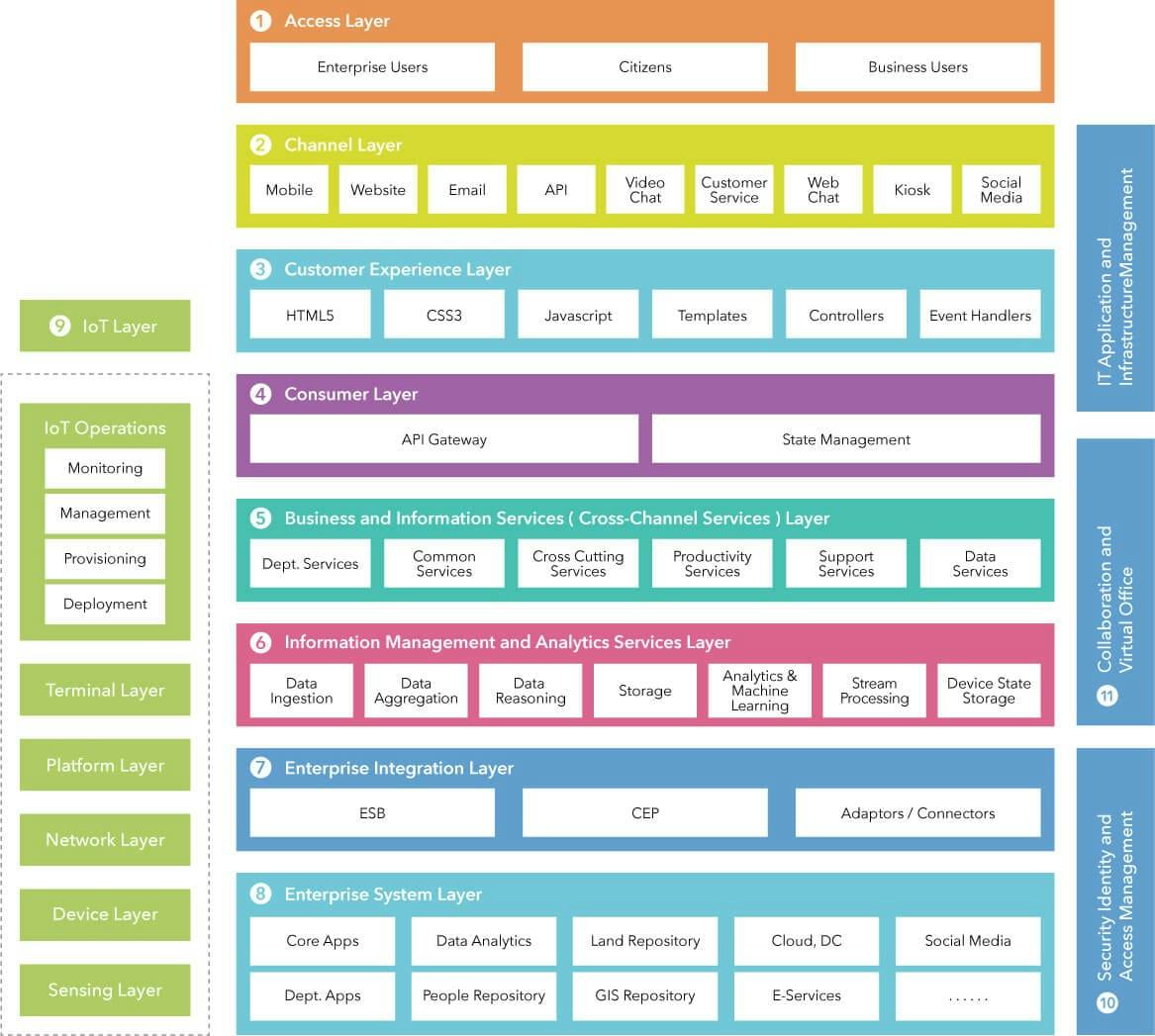Table of contents
Solution Architecture

Business Architecture: describes the sequence of events and actions for each user persona to complete the online loan application Data Architecture: defines the information scope needed to complete the loan application such as information format, source, and quality. Data architecture also addresses the concerns for private data security and integrity while ensuring performance, availability, and consistency Application Architecture: Decomposes the application into granular single responsibility UX, functional, data components that the loan account opening web or mobile apps consist of Integration Architecture: Identifies external data and functional resources, and defines the methods to interact with these resources Security Architecture: Deals with Customer Identity and Access Management (CIAM) concerns such as user registration, authentication, and password recovery Technology Architecture: Addresses the infrastructure needs for high availability and performance for:
- compute (virtualization, containerization, serverless)
- network (firewalls, subnets)
- storage (object, block, file share)
DevOps Architecture: Focuses on enhancing change management operations via CI/CD pipeline and application observability (logs monitoring, incident management)
Software Architecture

- A Domain Object Model Class Diagram is essential in defining the domain-driven design that ensures consistent data structure across UX, API, and backend data tiers.
- A Services Component Diagram breaks down the application into bounded context REST APIs that can be implemented as self-contained microservices
- A Sequence Diagram demonstrates how each user function is implemented by an orchestrated process made up of multiple service interactions
- A Deployment Diagram is necessary to demonstrate the platform each software component is deployed on such as VMs, Kubernetes pods, or serverless lambda, and how high availability is configured across multi-availability zones.
N-Tier Architecture

Therefore New Gen Cloud Native Digital Application Architecture is quite more comprehensive and well derived based on the foundation of TOGAF Architectural Framework and NIST CyberSecurity Principles (New Gen Digital Architectural Framework == f(TOGAF, NIST, DevSecOps 2.0, Distributed Micoservices Governance, Hybrid Distributed Computing, Micro Frontend LCNC UI-UX Architecture,Modern Data and AI Architecture, Cloud Native Virtualization Architecture))
Follow the series to know the purest and holistic foundational work - NIST and TOGAF
References


